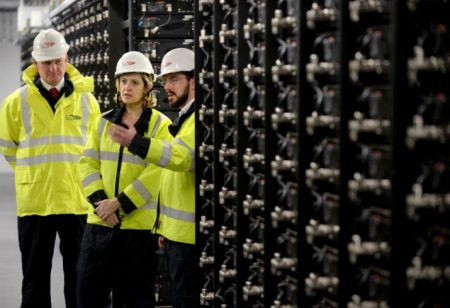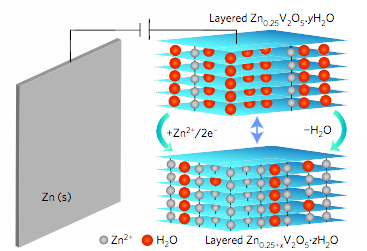September 10, 2016 – The missing element in making the leap to a 100% renewable energy paradigm is storage. And by storage I mean the ability to capture surplus energy from renewable sources and use it when the sun is not shining and the wind is not blowing.
Storage covers a range of technologies. It can be capturing light energy converting it to heat which then is released. That’s how a number of solar-power plants work with molten salt or sand used as the storage medium. Wind and wave power, and even hydroelectric installations can use surplus power to pump water to retention basins at a higher elevation using the grade and gravity to power turbines connected to electric generators.
But by far the most common form of storage is found in chemical batteries. Today lithium-ion is king of the battery world. But not for long as new battery technology emerges.
An emerging potential lithium-ion replacement may be a battery developed by University of Waterloo chemists. It is a zinc-ion battery that is water-based, uses non-inflammable, non-toxic materials (zinc is the principle metal in American pennies), and costs half the price of current lithium-ion technology. It is not a battery that you would use in a smartphone but for the energy infrastructure it appears to be an ideal storage medium.
The battery doesn’t require special manufacturing conditions or handling criteria for its assembly. Its electrode material can be manufactured using a microwave. It generates electricity by having positively charged ions travel from the zinc metal anode to the cathode made from vanadium oxide nanosheets. Water in the electrolyte facilitates the movement of the ions and improves the cycling life and recharge response times of the battery. The battery is non-reactive unlike lithium-ion which requires a stable graphite anode as a control. In its current form it can provide 1,000 recharge cycles retaining 80% of its capacity and producing 450 watt-hours per liter which is comparable to lithium-ion technology without all of the environmental risks and challenges posed by the latter.
States Professor Linda Nazar, Department of Chemistry at University of Waterloo, ” the worldwide demand for sustainable energy has triggered a search for a reliable, low-cost way to store it…the aqueous zinc-ion battery we’ve developed is ideal for this type of application because it’s relatively inexpensive and it’s inherently safe.”
In aqueous zinc-ion battery technology size doesn’t matter because the battery is primarily designed for grid-scale use unlike lithium-ion which has many more uses in much smaller form factors such as cell phones, and laptop computers.
The combination of batteries like aqueous zinc-ion combined with lower cost and more efficient photovoltaic cells creates a foundation for successful transition to a non-fossil fuel energy future. In 2016 utility-scale solar power is expected to be cost competitive with conventional power generation from coal and natural gas. A recent report appearing in Scientific American confirms this citing data gathered by Lawrence Berkeley National Laboratory that shows rapid declines in the installed cost per watt of generated solar capacity. When combined with scaleable, inexpensive battery technology, the conditions are ripe for wholesale implementation of a switch over to a renewable energy infrastructure, energy that is continuously reliable 24×7, the only argument that fossil fuel-power generation continues to use to justify its perpetuation.



















[…] 1/2 the cost of lithium-ion. it's non-toxic, non-inflammable, 1,000 recharges retaining 80% capacity, Perfect for utility grid storage. […]